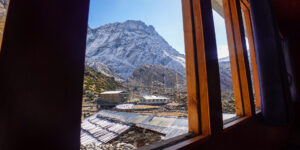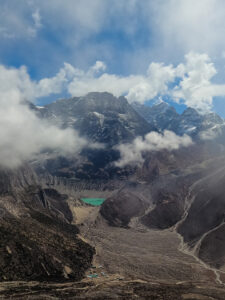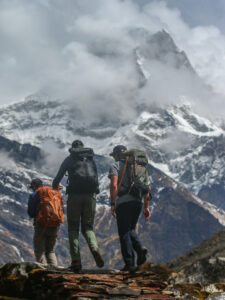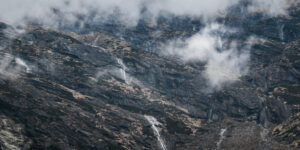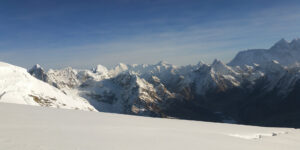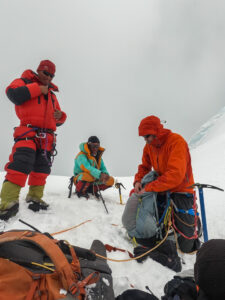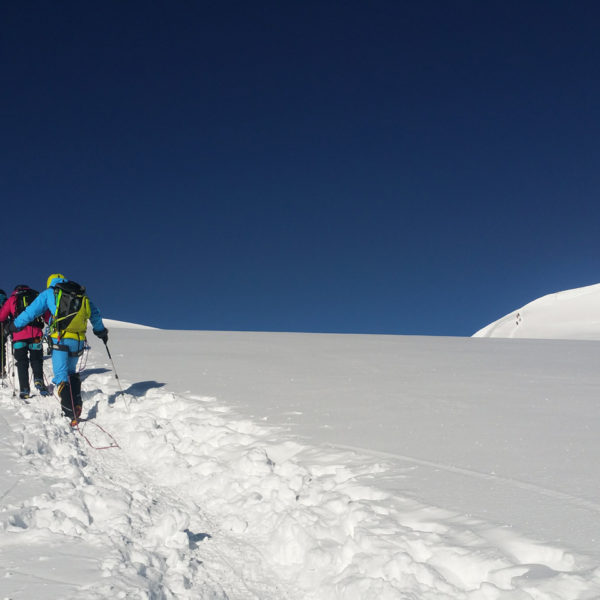
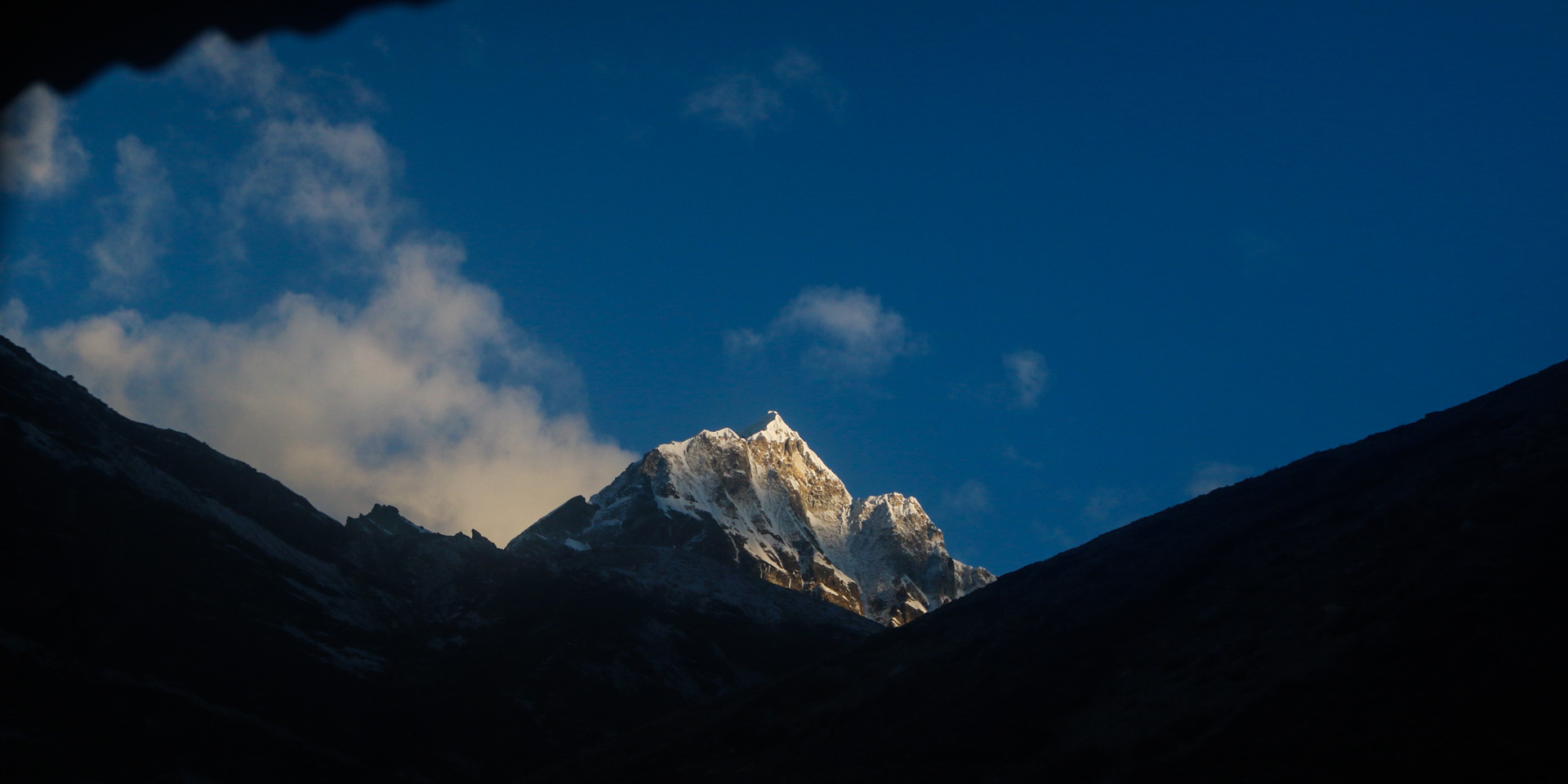
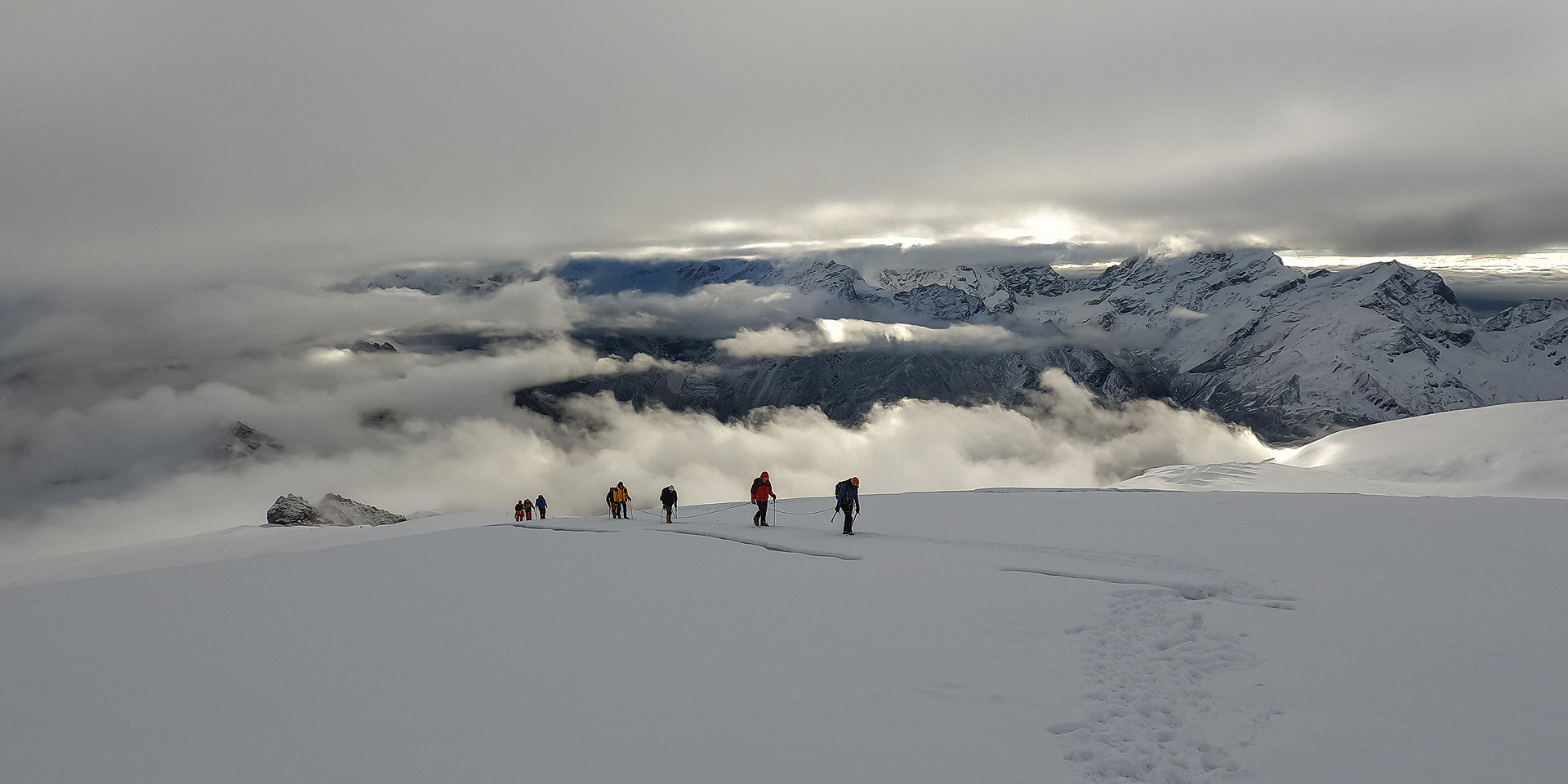

Mera Peak Climb
Mera Peak is the highest trekking peak in Nepal at over 6,400m. The view from the summit is one of the finest in the Himalaya with five 8,000m peaks visible: Everest, Lhotse, Cho Oyu, Makalu and Kanchenjunga.
Our itinerary has been carefully designed to allow for gradual acclimatisation. We believe that by using this itinerary you will have a higher chance of safely summiting Mera Peak and enjoying the experience.
Note: A helicopter pickup at the end of the climb from Khare is possible, cutting the length of the trip to 15 days if you are short of time.
- Starts In: Kathmandu
- Ends In: Kathmandu
- Duration: 18 Days
- Difficulty Grade: Challenging
Highlights
- See five 8,000m peaks from the top: Everest, Lhotse, Cho Oyu, Makalu and Kanchenjunga
- Test your beginner/intermediate mountaineering skills on this Alpine Grade F peak
- Mera Peak (6,476m) is the highest of the permitted Nepali trekking peaks
Itinerary
Day 01: Fly to Lukla, Trek to Paiya [2730m]
Your guide will meet you early in the morning and escort you to the domestic airport for your spectacular flight and exciting landing on the steep mountain runway. This brings you to the start of your trek at the village of Lukla [2800m]. While your guide organises the trekking crew, you have a cup of tea and we then head down the Dudh Kosi Valley on a well-marked trail.
Our route takes a southerly direction along the old Jiri to Everest Base camp trail and other old trade routes directly south. We first trek through a few farms growing subsistence crops such as millet, corn and buckwheat and then as we trek higher across the Chutok La, into stands of oaks, maple and rhododendron to your first night halt at Paiya.
Trekking time: Approx. 4 hours
Accommodation: Tea House
Meals included:
Lunch, Dinner
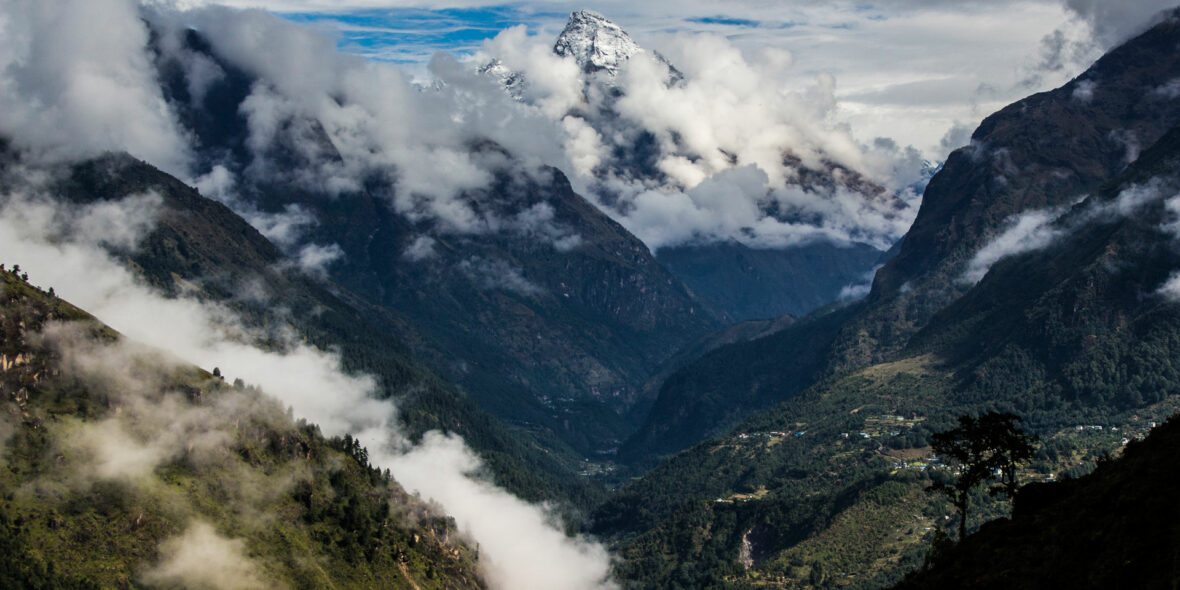
Day 02: Trek from Kharikhola to Panggom [2850m]
This morning we follow the main Everest trail briefly before turning up a path that leads into the forest and traverses around many ridges to the valley of the Kari Khola. We need to climb up over the Khari La (3080m), which is good as we avoid the new road below. As we approach Panggom, set in the base of a small bowl like valley immediately below the Narkung La, we travel through forests of rhododendron, pines and oaks. Panggom is a very old settlement little changed, with a new gompa and expansive views out over the valley.
Walking time: Approx 5 hours
Accommodation: Tea House
Meals included:
Breakfast, Lunch, Dinner
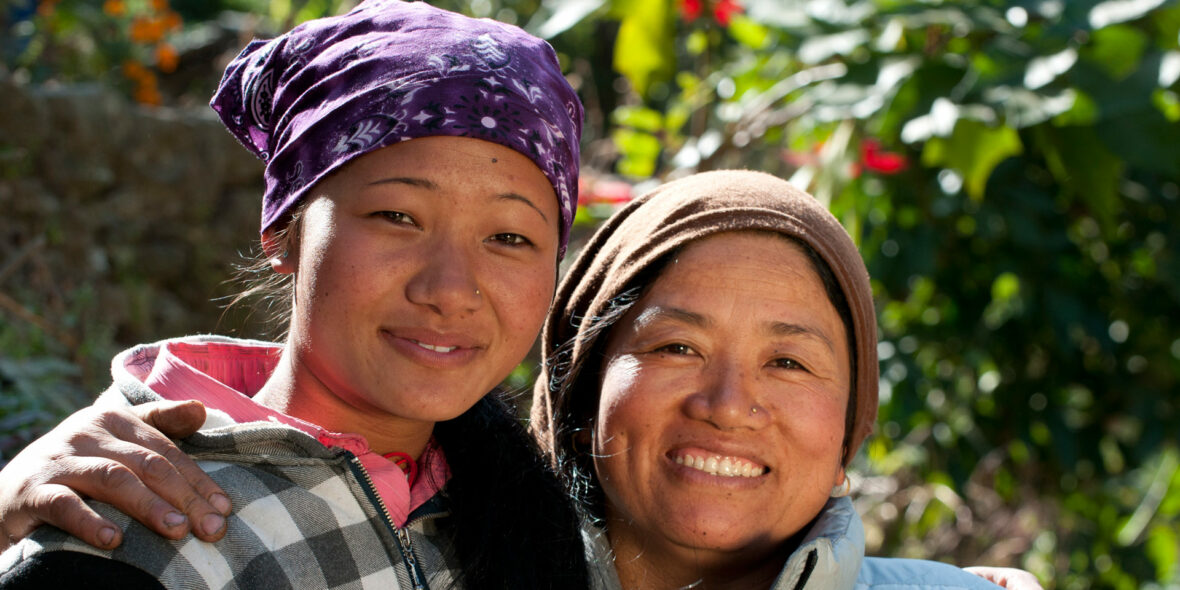
Day 03: Cross Narkung La [3174m] and trek via Sibuje [2770 m] to Najing Dingma [2600m]
A great day of trekking which begins with a climb up to the Narkung La (3174m) on the main watershed seperating the valleys of the Dudh Kosi and Hinku Khola. We have our first sight of Mera Peak before making a steep descent to the village of Sibuje (2770 m). Afterwards we follow a very steep and loose trail down to the Hinku river. We cross a suspension bridge to reach our lunch place located beyond the bridge. After lunch we have a climb up to our overnight tea house at Najing Dingma taking a further two to three hours.
Walking time: Approx 5-6 hours
Accommodation: Tea House
Meals included:
Breakfast, Lunch, Dinner
Day 04: Trek to Chalem Kharka [3600m]
This morning we climb from Najing Dingma Surke La (3985m) taking about 1.5 hours to reach there. We then follow Surkhe Danda ridge which is covered in bamboo and rhododendrons. There are beautiful views looking out to the hills East of the Hongu valley. We walk for 2 to 3 hours to reach Chalem Kharka. Here we stay in a small tea house run by villagers from Bung village.
Walking time: Approx 4-5 hours
Accommodation: Tea House
Meals included:
Breakfast, Lunch, Dinner
Day 05: Trek to Khola Kharka [4200m]
Today we walk uphill towards a pass at an altitude of 4,200m. At the top of the pass there are superb views of Mount Kanchenjunga, the third highest mountain in the world. The walk up from Chalem to the pass takes about two hours.
We trek for a further 1.5 hours to a second pass at 4,450m. We then have a short descent taking twenty minutes to the sacred Panch Pokhari lakes. Each summer Hindu pilgrims visit for a religious festival. Look out for the tridents left behind in this area, these symbolise the Hindu God, Lord Shiva. From the lakes it takes a further 1/2 hour to walk to our very simple tea house at Khola Kharka.
Walking time: Approx. 4-5 hours
Accommodation: Tea House
Meals included:
Breakfast, Lunch, Dinner
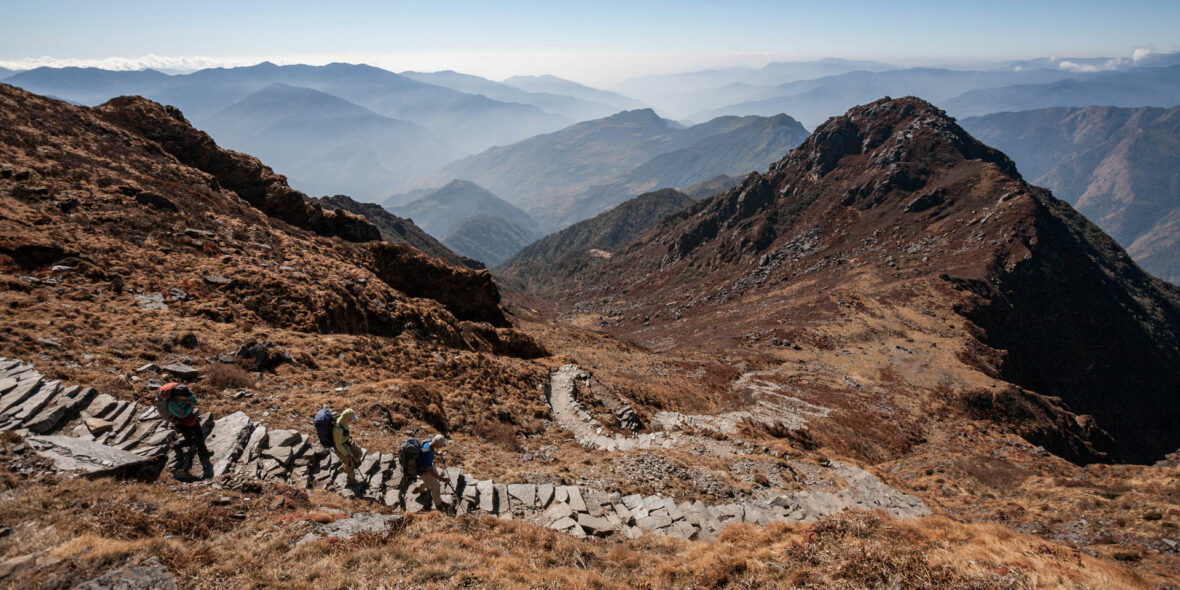
Day 06: Trek to Khote [3600m]
Heading north our route now contours around many ridges on the eastern side of the Hinku, descending lower into forests of rhododendron and scree. We reach a sandy boulder-choked area known as Khote at an altitude of 3600 metres. There are several seasonal lodges and shops here in this otherwise uninhabited part of the Hinku Valley.
Walking time: Approx. 7-8 hours
Accommodation: Tea House
Meals included:
Breakfast, Lunch, Dinner
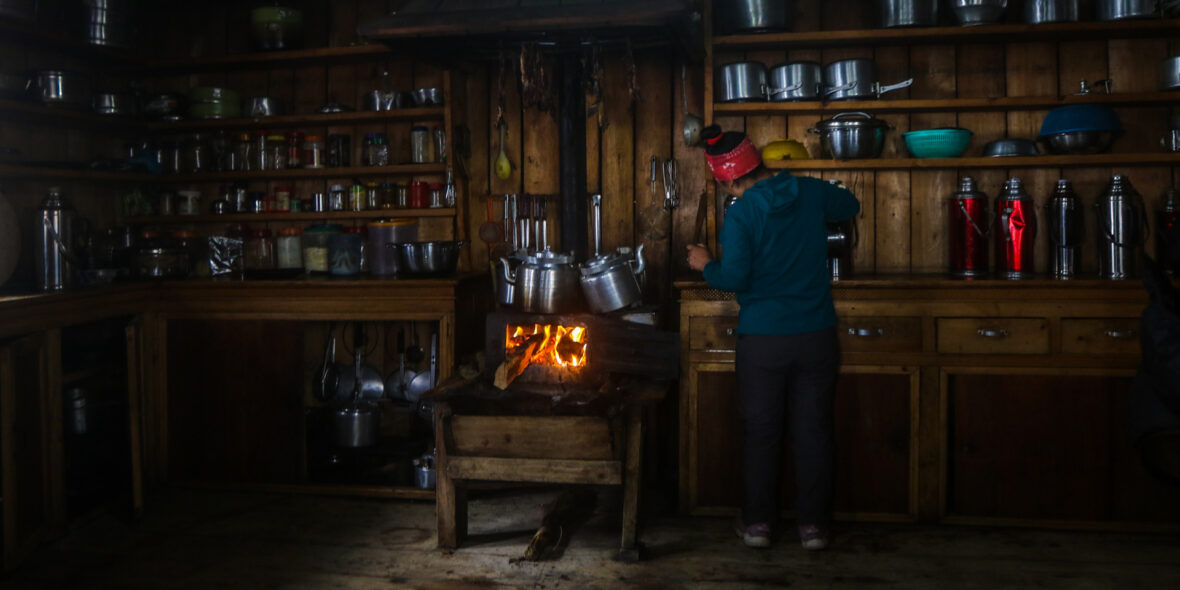
Day 07: Trek from Kote to Tagnag [4350m]
Following the west bank of the Hinku Drangka northwards, the forest eventually disappears and the valley widens and becomes much more open. There are no villages in the Upper Hinku, only small kharkas used for grazing goats, sheep and yaks. The twin summits of Kusum Kanguru appear on the left while the valley is bounded on the right by the steep rock face of Mera’s satellite peak. Ahead framed in the sharp V of the valley is the imaginatively named Peak 43. We will take lunch at Gondishung, a summer herders’ settlement consisting of a few roofless huts and stone-walled enclosures, as well as a long ancient ‘mani’ wall of intricately carved prayer stones. Beyond Gondishung we pass nearby a fascinating 200 year-old gompa built beneath a massive boulder, and a number of crude mani walls. It is well worth visiting this gompa to burn some juniper at the shrine, an offering that just might ensure a successful ascent of Mera Peak. From the gompa it is an hour’s walk over moraines to the yak herders’ settlement of Tagnag. Once similar in appearance to Gondishung, nowadays there are several teahouses here. We will spend at least two nights at Tagnag (4350m) before moving up to Mera Basecamp.
Walking time: Approx 4-5 hours
Accommodation: Tea House
Meals included:
Breakfast, Lunch, Dinner
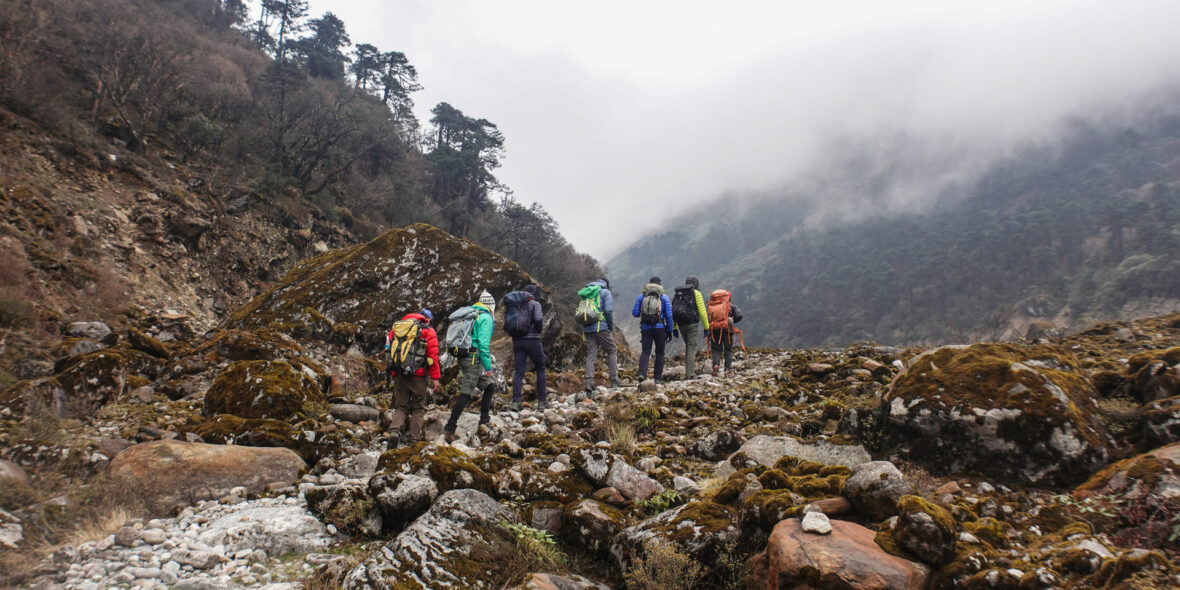
Day 08: At Tagnag
To aid our acclimatisation we spend two nights at Tagnag. In the morning we will organize a walk up the ridge behind Tagnag where there are superb views of Mera Peak, Kyashar and Kusum Kanguru. If we continue to top of the ridge, we will get to an altitude of 5,100m at Shertemba Go. This walk takes three and half hours up and one and a half back to Tagnag.
Accommodation: Tea House
Meals included:
Breakfast, Lunch, Dinner

Day 09: Trek from Tagnag to Khare [5000m]
Heading up from Tagnag towards the Mera Basecamp at Khare, a good trail leads up and across the moraine which dams Charpatti Tal, and reaches a high point lined with cairns overlooking this glacial lake in about 30 minutes. From here the trail descends slightly to cross a sandy bowl and then climbs alongside a khola or stream to the large pasture of Dig Kharka. Here we cross the khola on stepping stones and then climb for a further hour and a half to Khare, the basecamp for Mera Peak at an altitude of approximately 5000 metres.
Walking time: Approx 4-5 hours
Accommodation: Tea House
Meals included:
Breakfast, Lunch, Dinner
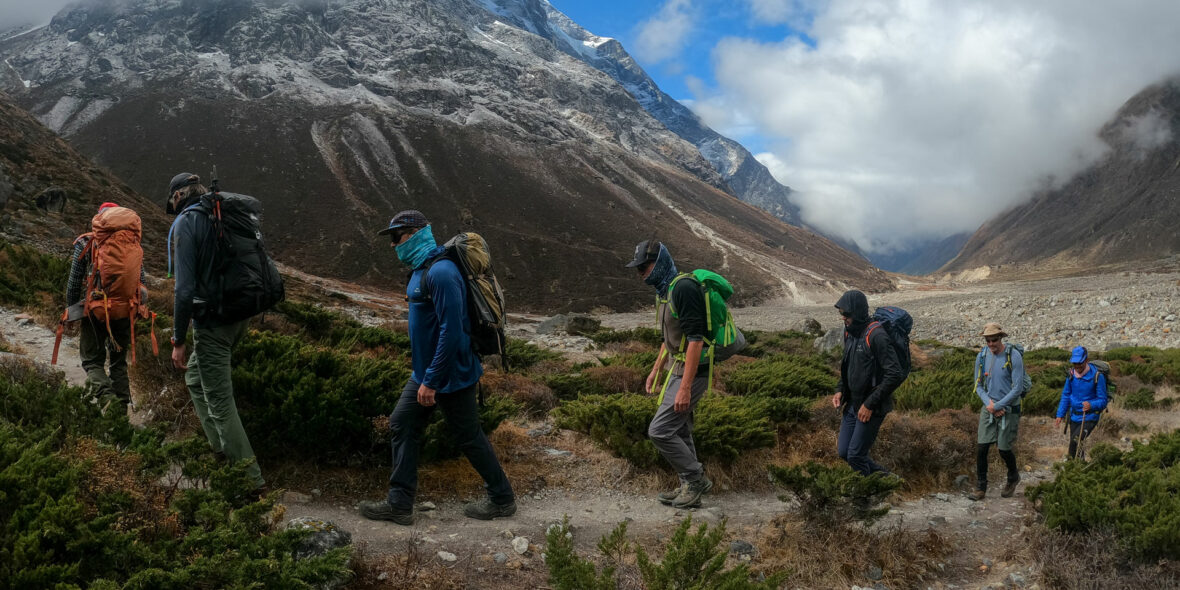
Day 10: At Khare - Acclimatise and practise glacier skills
To aid our acclimatization we spend two nights at Khare. For those who would like to practice skills needed for glacial travel we will organize a session on the glacier above Khare. Alternatively, you can go for a day walk and explore the area to the north of camp towards Kangtega.
Accommodation: Tea House
Meals included:
Breakfast, Lunch, Dinner
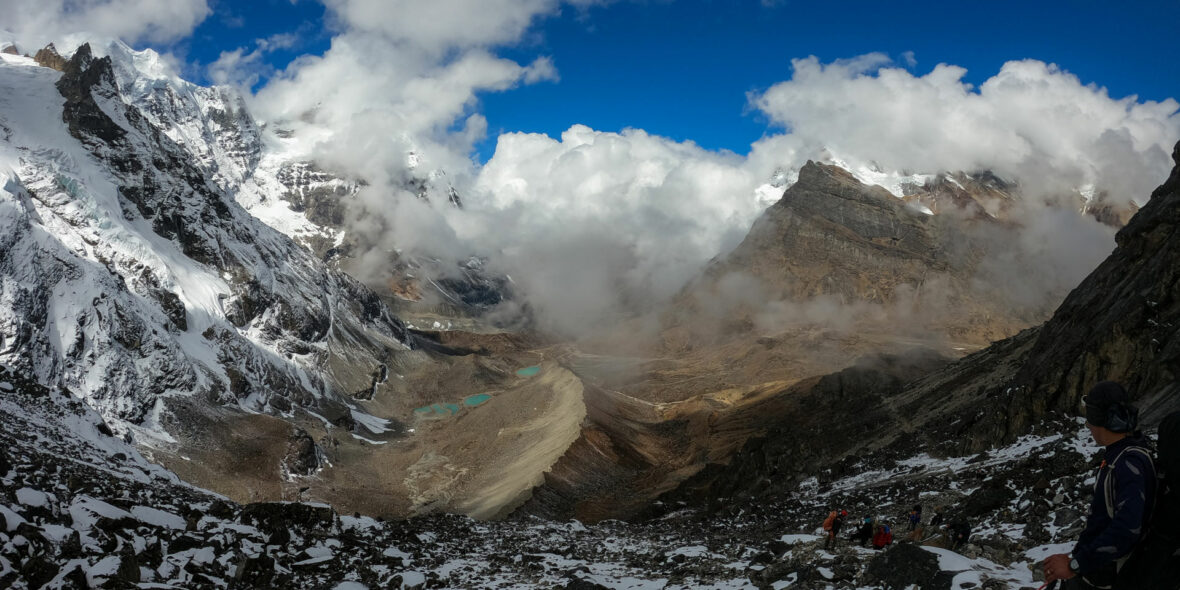
Day 11: Trek from Khare to the Mera La [5415m]
Leaving Khare we ascend a moraine ridge then follow ed by a scree slope to arrive at a small tea shop, this normally takes one and a half hours walking.
It is a further half hour to reach the snout of the glacier where we gear up putting on crampons and harness. Once on the glacier there is a short climb on ice to reach the glacial plateau that can then be followed all the way to the Mera La. Once at the Mera La there is a short descent to the east side of the pass to get to the rocky tent platforms.
Walking time: Approx 4-5 hours
Accommodation: Camping
Meals included:
Breakfast, Lunch, Dinner
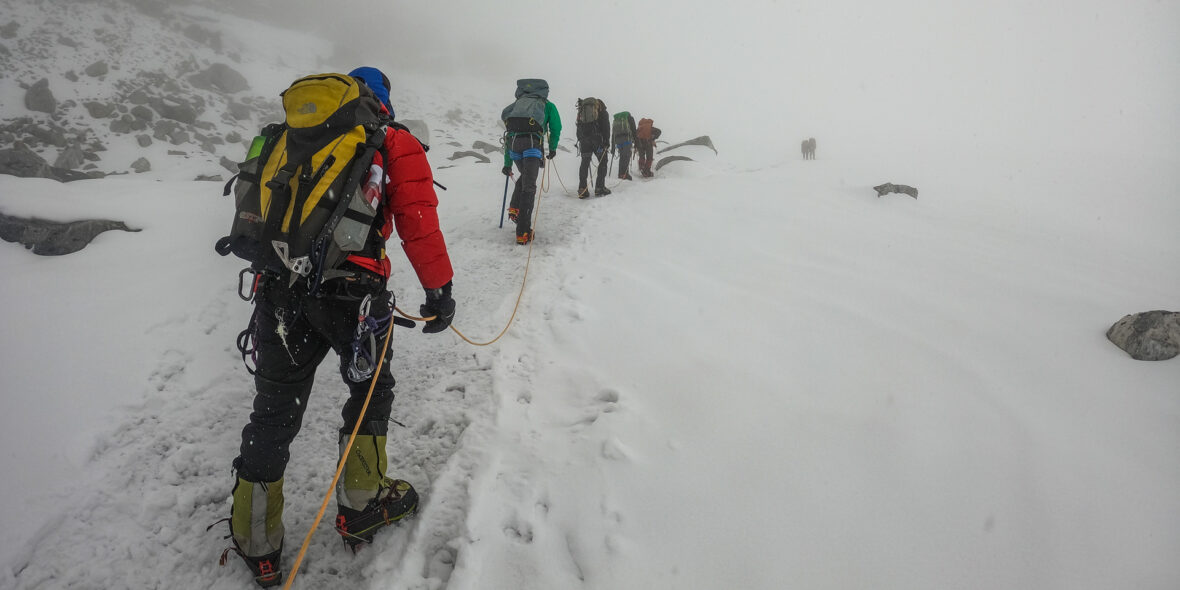
Day 12: Climb to High Camp
There are several options for a high camp on the mountain but the best by far is behind the pinnacles at approximately 5800 metres. Here there is shelter from the wind, usually no snow, and well constructed platforms for several tents. It takes 3 to 4 hours to reach this site from the Mera La. After the first half an hour’s climb, the view north into the main Himalaya opens out. First of the 8000 metre giants in view is the red pyramid of Makalu, then Everest with its cloud plume peeking over the impressive black wall of Lhotse. Later you can see to the north-west the large white girth of Cho Oyu. Arriving at high camp, if the weather has been kind, the beautiful massif of Kangchenjunga comes into view, far to the east. Five of the world’s six highest mountains.
Walking time: Approx 4 hours
Accommodation: Camping
Meals included:
Breakfast, Lunch, Dinner
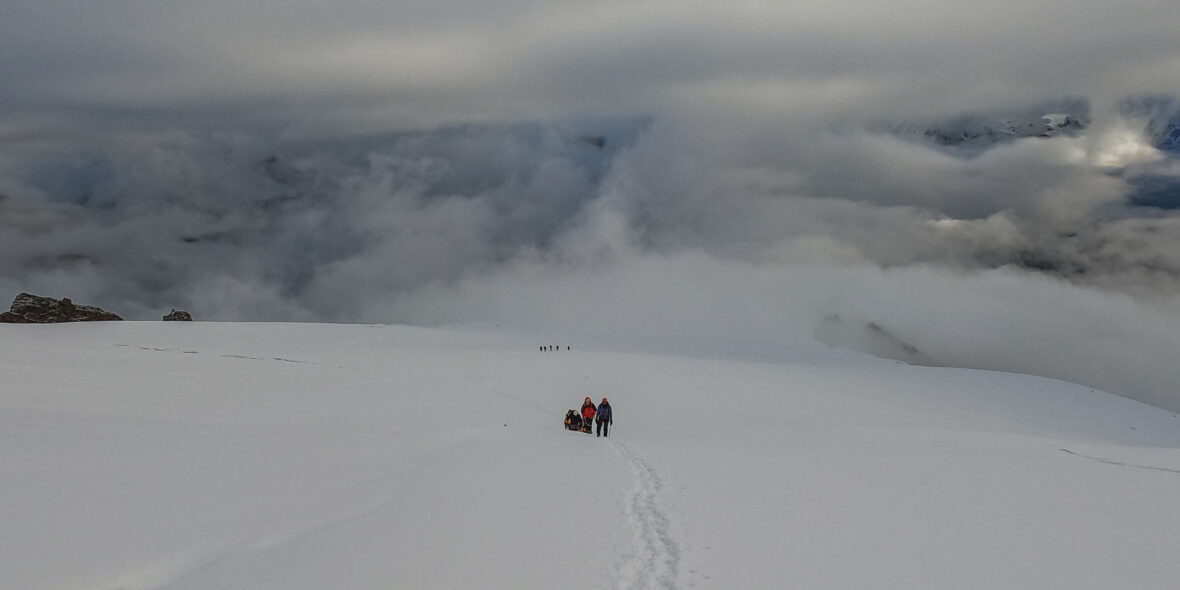
Day 13: Climb Mera Peak [6476m], Descend to Khare
Today we have an early morning start normally around 3am walking in the dark using head torches to light the way, in November the first glow from sun appears at 5.15am and it is light by 6.15am. Of course it will be very cold so it is essential that you are fully kitted out for these conditions.
Shortly out of High Camp the route passes through an area with several crevasses then after an hour or so the trail turns to right and starts to steepen as we approach the summit.
It normally takes between five and six hours to reach the summit from High Camp whereas the descent back down take two hours and then another two hours down to Khare.
Walking time: Approx. 9-10 hours
Accommodation: Tea House
Meals included:
Breakfast, Lunch, Dinner
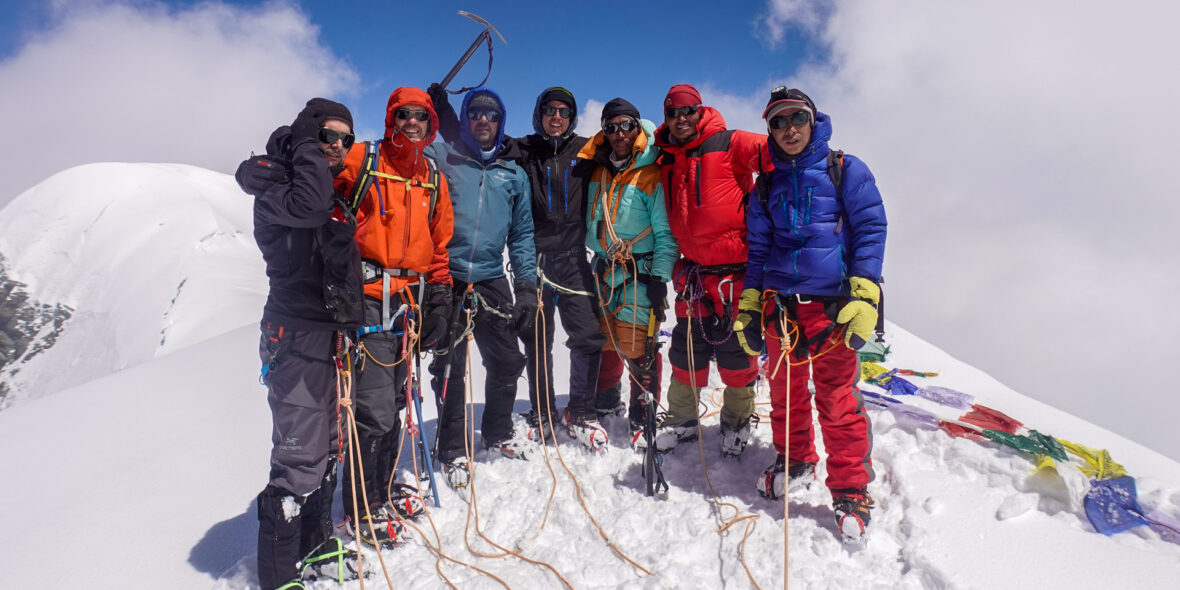
Day 14: Spare Day
This spare day could be used for a second summit attempt if poor weather and conditions were experienced yesterday. This is also a buffer day in case of any other delays experienced along the way.
Accommodation: Tea House
Meals included:
Breakfast, Lunch, Dinner
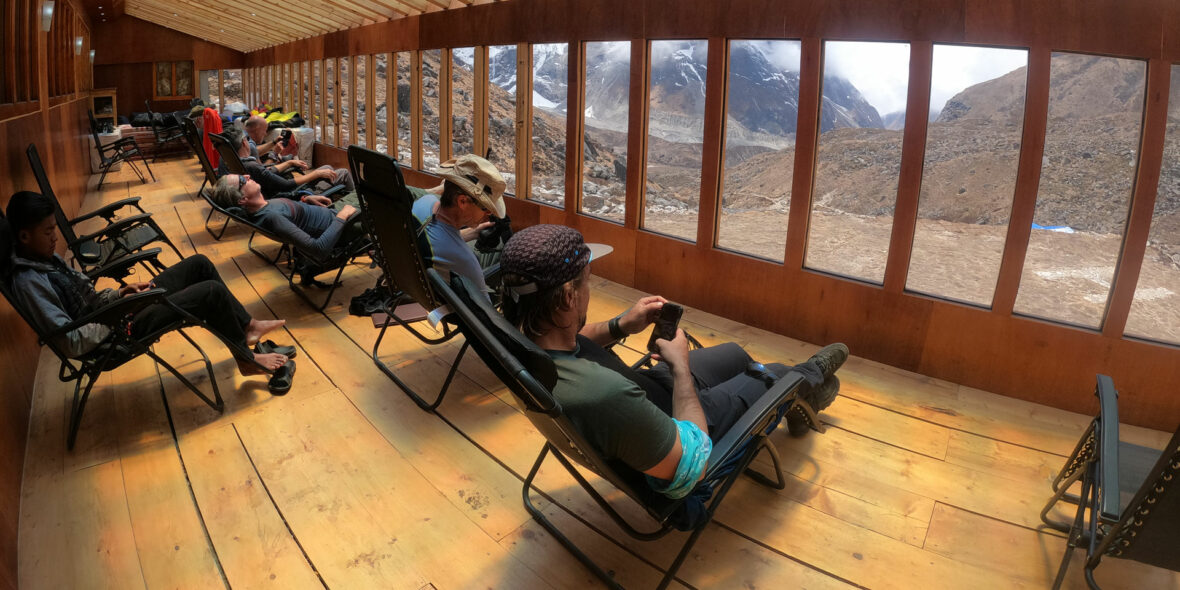
Day 15: Trek from Khare to Khote [3600m]
Today we retrace our route back to Kothe. It takes two hours to walk to Tagnag then a further two hours to lunch then afterward it takes a further than two and half hours to Kothe.
Walking time: Approx. 5-6 hours
Accommodation: Tea House
Meals included:
Breakfast, Lunch, Dinner
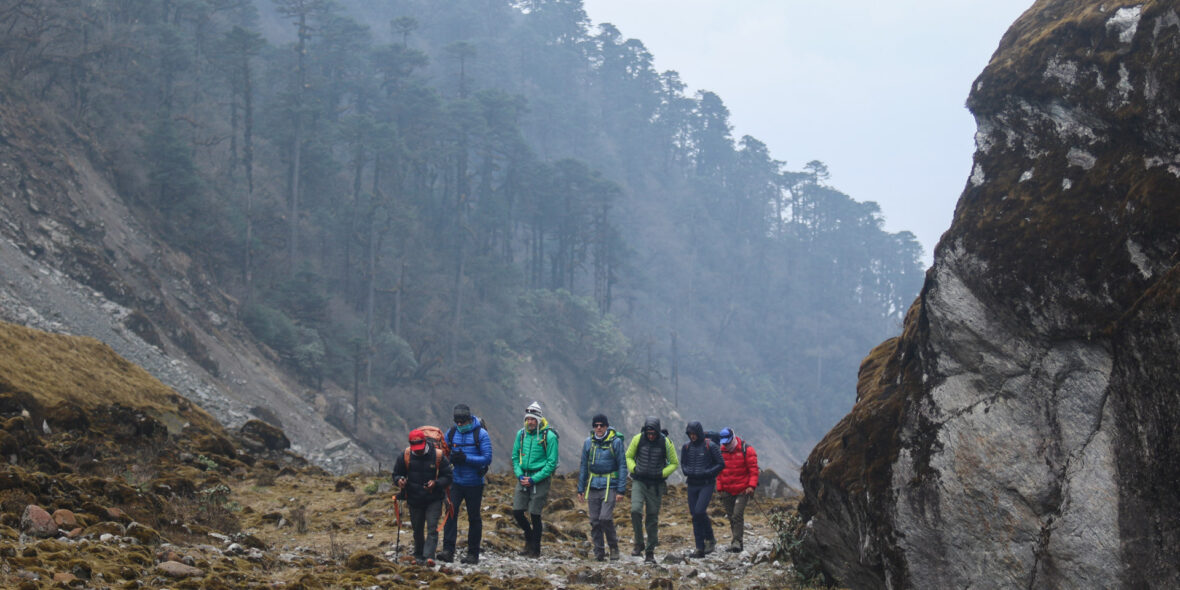
Day 16: Trek from Khote to Thuli Kharka [3580m]
Today we climb up through the lush forest on the west side of the Hinku Valley to Tuli Kharka below the Zatwra La. On occasion, we can look back to the impressive south face of Mera.
Walking time: Approx. 5-6 hours
Accommodation: Tea House
Meals included:
Breakfast, Lunch, Dinner
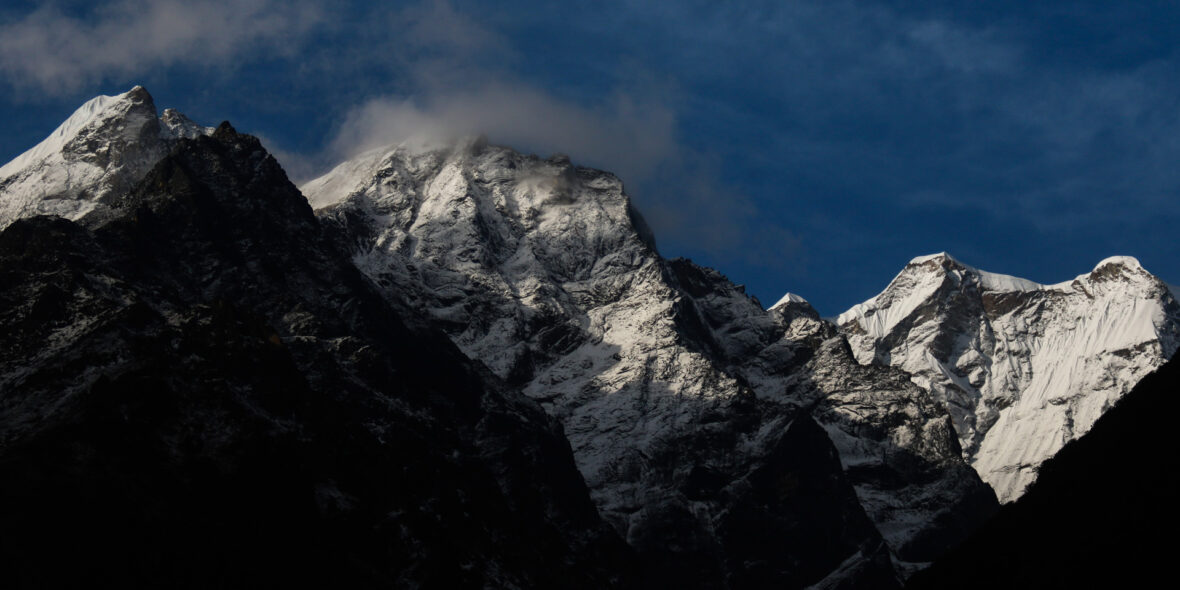
Day 17: Trek from Thuli Kharka to Lukla [2800m]
The last 300 to 400 metres of the ascent to the Zatrwa La will be our last climb of the trip, with superb views southwards across the ridge and valley landscape of Nepal’s Middle Hills. From the crest of the pass we trek downhill, steeply in places, for almost 2000 metres to the welcoming lodges of Lukla.
Walking time: Approx. 6-7 hours
Accommodation: Tea House
Meals included:
Breakfast, Lunch, Dinner
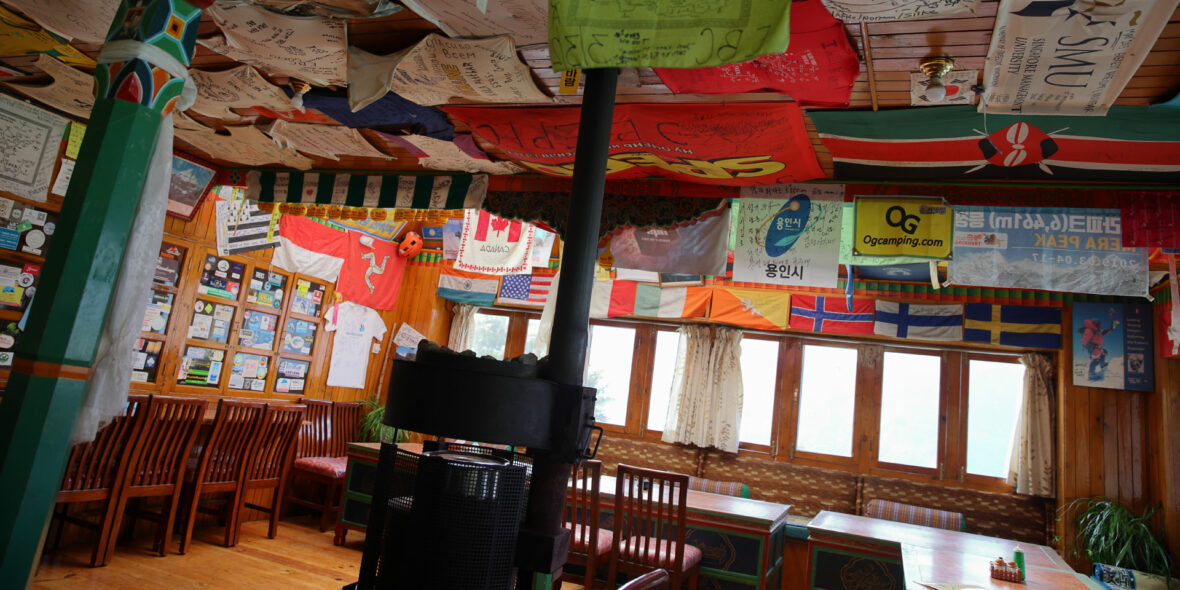
Day 18: Fly from Lukla to Kathmandu
After an early breakfast, you head to the airstrip with your guide for the return flight to Kathmandu. Flights out of Lukla usually depart early in the morning so you should arrive in Kathmandu with plenty of time for further sightseeing, shopping, getting a massage, or taking in the life of town from a street side cafe.
Upon arrival at the airport, you’ll be transferred to your hotel in Kathmandu to check in and then the rest of the day is free.
Accommodation: None
Meals included:
Breakfast
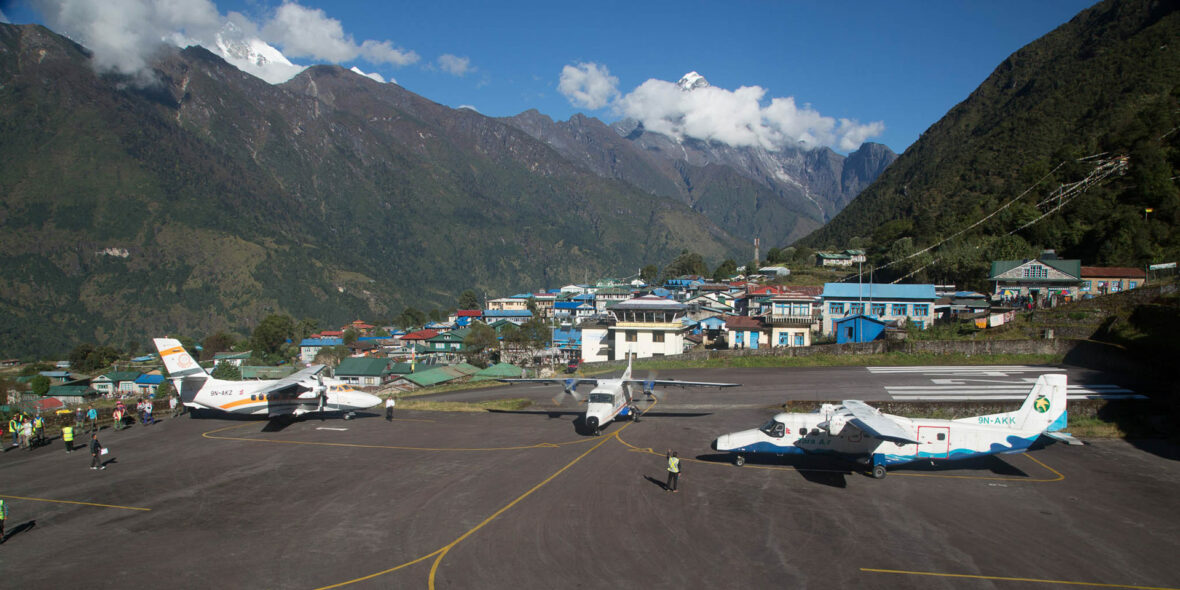
Included In Price
- Tea house accommodation while on trek
- Meals as per the itinerary (all meals on trek, with filtered drinking water)
- Camping equipment while climbing
- Peak Permit
- Climbing guide
- Group equipment [rope, ice screw, snow bar, etc]
- Transportation as per the detailed itinerary (includes the flights to Kathmandu for you and your guide, including transfers and airport taxes)
- Your trekking guide, sherpas and porters, with all their transport, equipment, insurance, meals and accommodation
- A first aid kit with basic supplies appropriate for the group size and trek route – if you require or are taking specific medications it is critical that you discuss this with us prior to your trip departure
- Trekking permits and registration fees
Note: The local tea houses are basic but clean and they do not often have attached bathrooms or hot showers. The price is based on twin share and does not include any extra charge that lodge owners may levy for single rooms, attached bathrooms or hot showers (if these facilities are available) or for battery charging. We can’t know in advance what they may charge for such things in the different lodges along the way, so we prefer to leave this cost out, rather than pass along an estimated charge to you. The meal inclusions on trek are breakfast (one set breakfast and a tea or coffee), lunch (one main meal and a tea or coffee) and dinner (soup, main and dessert with a tea or coffee).
Not Included In Price
- Single supplement
- International flights to and from Kathmandu; Nepal visa fees and international airport taxes; any excess baggage charges
- Personal climbing equipment
- Comprehensive travel insurance that includes trip cancellation and emergency rescue / evacuation that covers all of the activities you will undertake during your trip should this be required for any reason (we require this as the minimum insurance cover)
- Services and activities not mentioned in the detailed itinerary above (eg additional nights, optional trips and sightseeing tours)
- Any gear or equipment that you may need to rent/buy – please ask us if you would like any advice about gear to bring/buy/rent
- Personal expenses (eg mineral water/soft drinks/bar bills, entrance/photography fees at monasteries, laundry, telephone calls, postage, donations, extra snacks etc)
- Any extra charge that tea house owners may levy for single rooms, attached bathrooms, or hot showers (if these facilities are available) and charging of batteries
- Tips for your city guide, drivers, hotels, restaurants etc (please ask if you would like guidance about appropriate tips)
- Costs incurred due to unforeseen events (eg caused by natural disasters, adverse road conditions/flight delays, labour strikes, fuel shortages, extreme exchange rate changes, etc)


